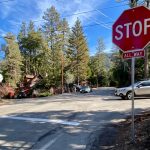Wildfire risk and forest health were the topics that Interim Chief of the U.S. Forest Service Victoria Christiansen testified about at a House of Representatives Natural Resources Committee hearing last week.
She told members of the Federal Lands Subcommittee, “Early predictions indicate that 2018 will likely be another challenging wildfire year. According to the forecast released by the National Interagency Fire Center on June 1, 2018, significant portions of the western United States are predicted to have above-average potential for significant wildfire activity between now and the end of September.”
California is among the states likely to suffer more acreage burned during wildfires.
Committee members almost unanimously questioned Christiansen about what actions the USFS was taking to reduce the risk of catastrophic fire encompassing its lands.
“In 2017, we saw a small part of the true mortality crisis afflicting our public lands,” said Subcommittee Chair Tom McClintock (R-CA). “The density on the land is three to four times what the forest can sustain. This damages its resiliency to drought, diseases and, ultimately, catastrophic fires.
“This crisis was not created overnight and won’t be solved overnight,” he added.
Christiansen reported that the USFS is making progress to increase work on the ground to improve forest conditions. New language in the 2018 Omnibus appropriations act for Good Neighbor Authority has helped in this area. The USFS is now collaborating on more than 150 agreements in 34 states.
Also, McClintock, Christiansen and other members of the subcommittee praised Congress’ bipartisan resolution to eliminate the USFS’ practice of using funds from other programs, such as recreation, to supplement fire-suppression costs.
“Fire borrowing was using prevention funds to fight fires … the more spent on fighting fires, the less spent on prevention, and the less spent on prevention, the more fires to have to fight,” McClintock said.
Christiansen discussed other steps the agency has taken to prevent or to address the fire damage. The USFS has reviewed its internal policies and is beginning to make changes that will shorten the time to make decisions on forest resiliency, she added. The USFS’ nine regions were to submit revised two-year plans for implementing these authorities, such as categorical exclusions for wildfire resilience projects, to Washington by June 8.
Also, there has been and will be greater use of categorical exclusions for treatment of badly burned areas after fires.
“Our focus to streamline planning over the past eight months has decreased the time necessary to authorize projects, reduced costs by nearly $30 million and resulted in more shovel-ready work,” Christiansen stated. “But we know there is more to do.”
Demonstrating her intention to do more, she shared that the USFS has treated 36 percent more acreage this year and timber-harvest levels have increased 13 percent.
The 2018 timber-harvest target is the highest in 20 years, according to Christiansen. The current goal is 3.4 million board-feet sold and 4-million-board-feet is the goal in two years.
Committee members expressed concern that timber harvests were removing fewer fuel threats more slowly than new forest growth, resulting in increasing accumulation of dead and dying fuels posing major fire threats. Committee members noted that nine of the largest fires have occurred since 2008.
While Christiansen agreed, she noted that many factors increase the threat of fires. Extended droughts, less active forest management, the proximity of many more residences to forests and others all create a complex situation for fire managers.










